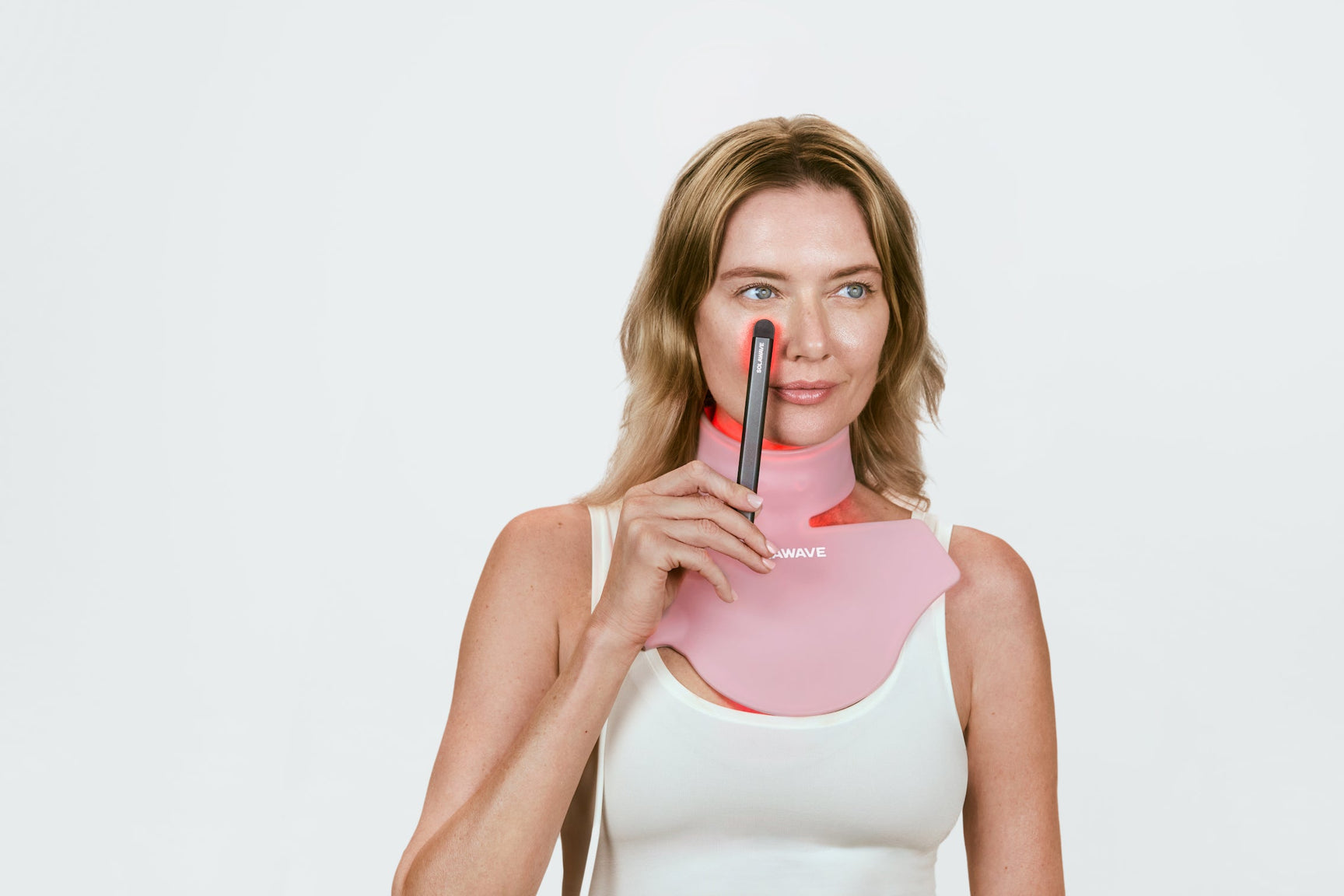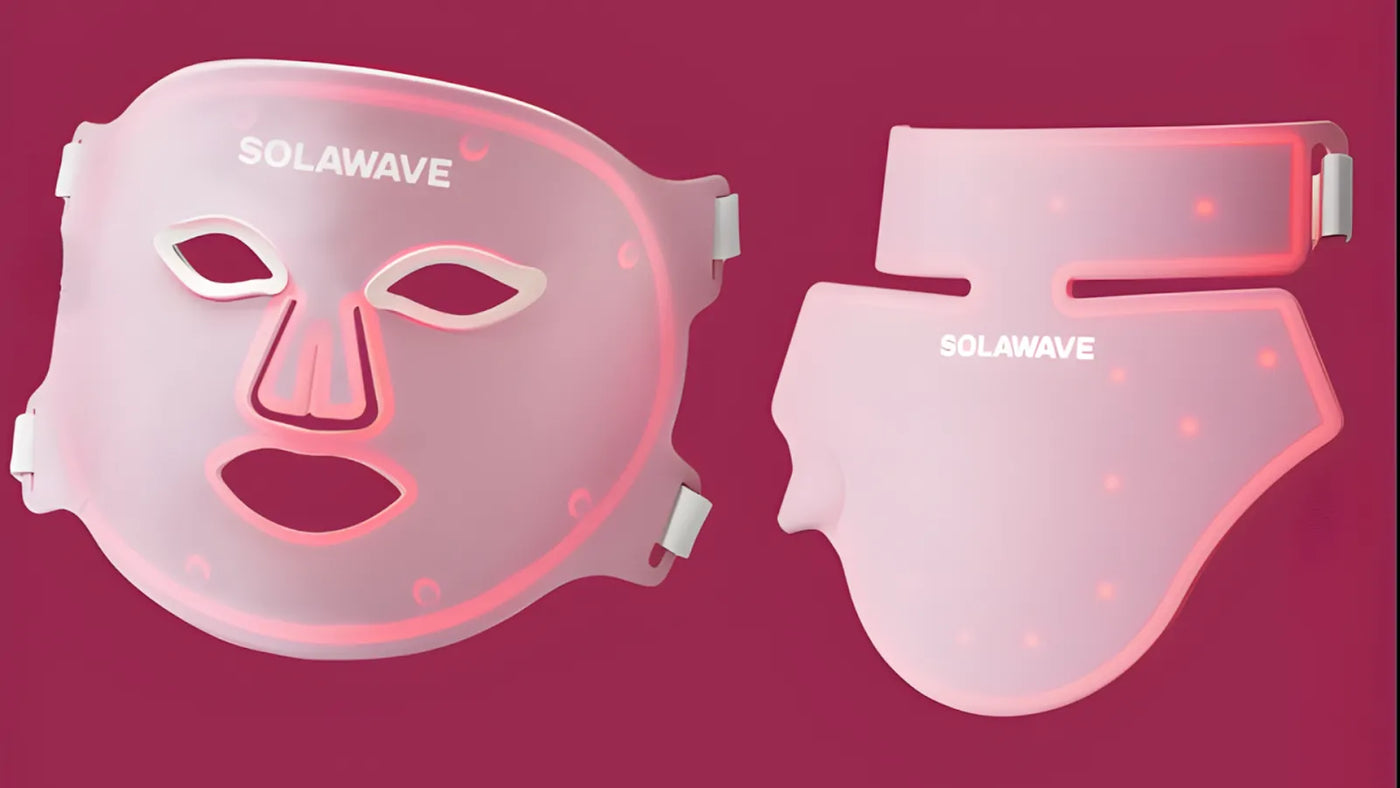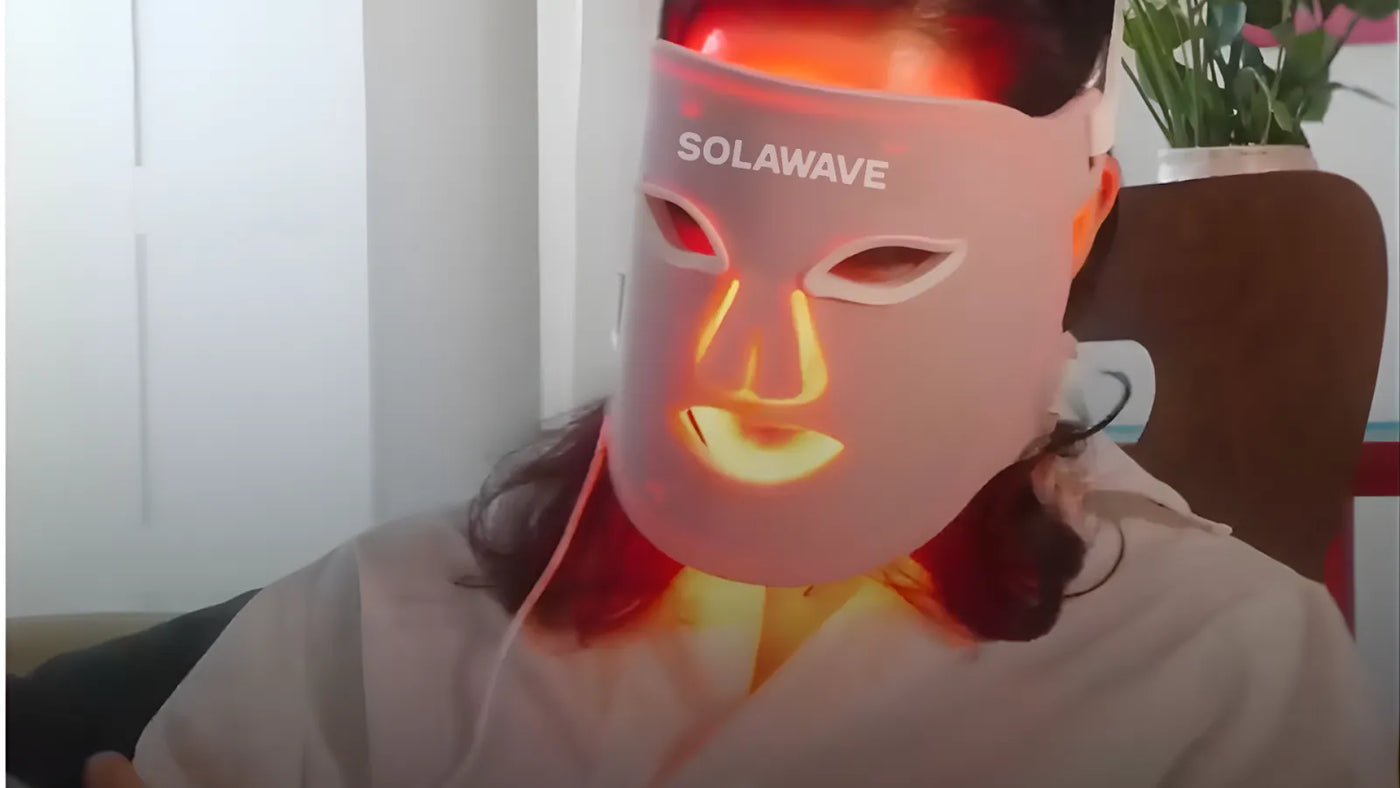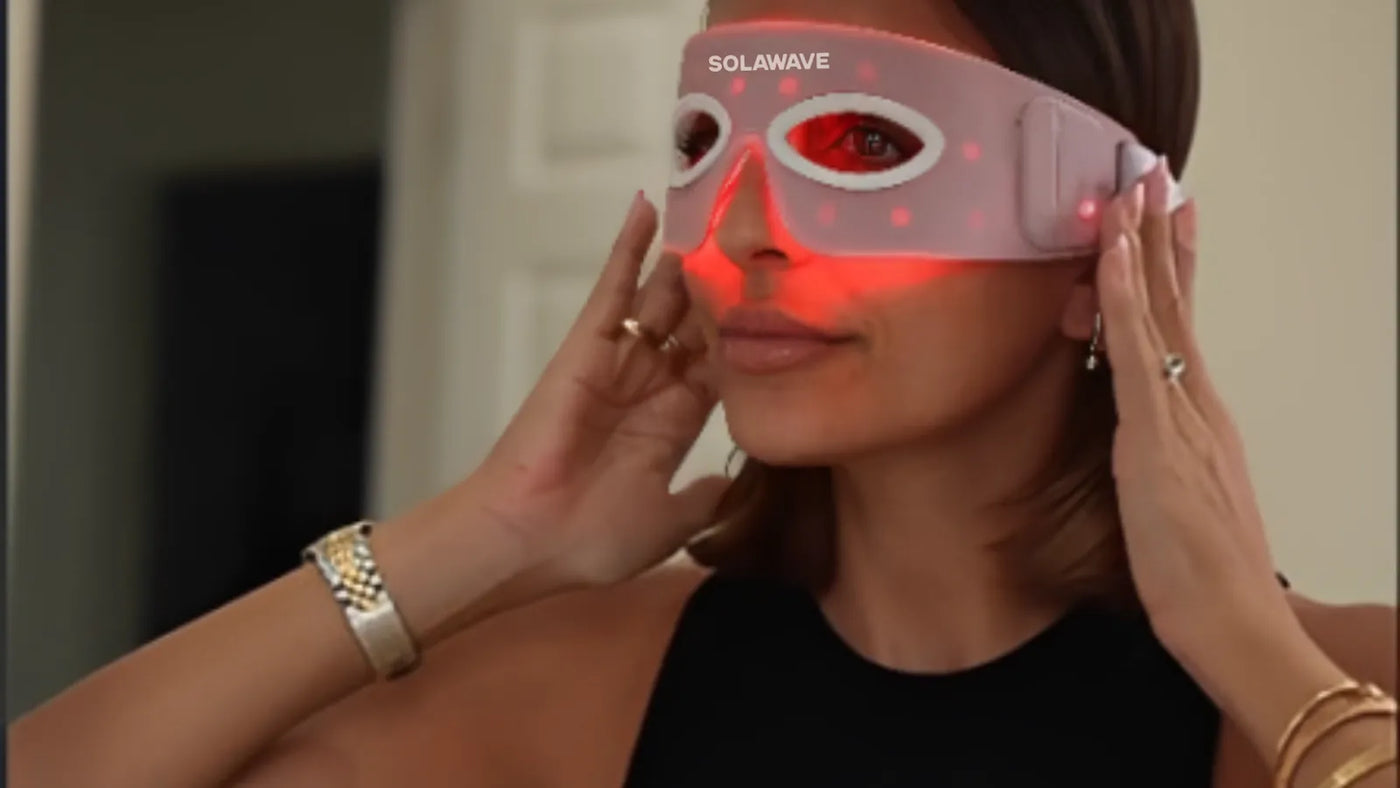

Red Light Therapy for Depression: Not Quite the Light You're Looking For
Red light therapy has gained significant attention in recent years, with many people exploring its potential benefits for skin health, muscle recovery, and overall wellness. As its popularity grows, some have wondered whether red light therapy could also play a role in supporting mental health, particularly for conditions like depression.
With that, we'll let you know from the get-go that red light therapy is not a cure or treatment for depression or any other mental health or medical condition. While it may offer certain wellness benefits, there is no scientific evidence to support its use as a solution for depression.
This article will explore how different types of light therapies may influence mood and support relaxation, highlight the proven benefits of red light therapy for other aspects of health, and, most importantly, discuss evidence-based treatments for depression.
Understanding Depression
Depression is a complex mental health and medical condition that affects how a person feels, thinks, and functions in daily life. It goes far beyond occasional sadness or feeling “down.” Instead, depression involves persistent feelings of sadness, hopelessness, or a loss of interest in activities that once brought joy. It can impact energy levels, sleep, appetite, concentration, and even physical health.
Common Symptoms and Clinical Signs of Depression
Depression can present differently from person to person, and recognizing these symptoms of depression and intervening early can make a big difference in recovery and quality of life. Some of the most common symptoms include:
-
Persistent sadness or low mood
-
Loss of interest or pleasure in hobbies and activities
-
Changes in appetite or weight
-
Sleep disturbances (insomnia or oversleeping)
-
Fatigue or loss of energy
-
Difficulty concentrating or making decisions
-
Feelings of worthlessness or excessive guilt
-
Restlessness or slowed movements and speech
-
Thoughts of death or suicide
Factors That Can Contribute to or Worsen Depression
Depression does not have a single cause. Instead, it often results from a combination of biological, psychological, social, and environmental factors.
Biological Factors
-
Genetics: A family history of depression or other mood disorders can increase risk.
-
Brain Chemistry: Imbalances in neurotransmitters, which are chemicals that help transmit signals in the brain, are linked to depression.
-
Medical Conditions: Chronic illnesses, hormonal changes, and certain medications can contribute to depressive symptoms.
Psychological Factors
-
Personality Traits: People with low self-esteem, high levels of self-criticism, or a tendency toward pessimism may be more vulnerable.
-
Trauma and Stress: Past trauma, abuse, or ongoing stress can play a significant role in the development of depression.
Social Factors
-
Isolation: Lack of social support or meaningful connections can increase feelings of loneliness and depression.
-
Major Life Changes: Events such as divorce, job loss, or the death of a loved one can trigger depressive episodes.
-
Socioeconomic Challenges: Financial stress, unemployment, or unstable living situations can also contribute.
Environmental Factors: The Case of Seasonal Affective Disorder (SAD)
One specific type of depression, known as Seasonal Affective Disorder (SAD), is closely linked to environmental factors — particularly, changes in daylight exposure. SAD typically occurs during the fall and winter months when sunlight is limited, and symptoms often improve with the return of longer, brighter days.
Reduced sunlight can disrupt the body’s internal clock (circadian rhythm), lower serotonin levels (a neurotransmitter that affects mood), and alter melatonin production (which regulates sleep). These changes can lead to symptoms such as low energy, increased sleep, weight gain, and a general sense of sadness or hopelessness during certain times of the year.
Other environmental factors, such as living in northern latitudes, spending little time outdoors, or working night shifts, can also increase the risk of developing depression or worsening existing symptoms.
Evidence-Based Treatments for Depression
Treating depression effectively requires a comprehensive approach that addresses both the underlying causes and the symptoms. Evidence-based treatments are those that have been rigorously studied and shown to help people manage depression and improve their quality of life. These treatments often work best when tailored to the individual and may involve a combination of medical, psychological, and lifestyle strategies.
Medical Treatments
Prescription Medications: Antidepressants are commonly prescribed to help balance brain chemicals that affect mood and emotions. Selective serotonin reuptake inhibitors (SSRIs) are among the most frequently used, but other types — such as serotonin-norepinephrine reuptake inhibitors (SNRIs), tricyclic antidepressants, and atypical antidepressants — may also be recommended based on individual needs. It’s important to work closely with a healthcare provider to find the right medication and dosage, as response can vary from person to person.
Psychotherapy: Also known as talk therapy, psychotherapy is a cornerstone of depression treatment. Cognitive behavioral therapy (CBT) is one of the most effective forms, helping individuals identify and change negative thought patterns and behaviors. Other approaches, such as interpersonal therapy (IPT) and psychodynamic therapy, can also be beneficial. Therapy provides a safe space to explore emotions, develop coping skills, and address underlying issues contributing to depression.
Lifestyle Interventions: Daily habits play a significant role in mental health. Regular physical activity, even light exercise like walking, has been shown to boost mood and reduce symptoms of depression. Prioritizing sleep hygiene—such as maintaining a consistent sleep schedule and creating a restful environment—can also make a difference. Nutrition matters, too; a balanced diet rich in whole foods supports overall brain health.
Holistic and Complementary Approaches
Mindfulness and Meditation: Practices like mindfulness meditation, yoga, and deep breathing exercises can help manage stress and promote emotional balance. These techniques encourage present-moment awareness and can reduce rumination, a common feature of depression.
Support Groups and Community Resources: Connecting with others who understand what you’re experiencing can be incredibly validating and helpful. Support groups, whether in-person or online, offer a sense of community and shared understanding. Community organizations and mental health nonprofits often provide resources, workshops, and peer support.
Importance of Professional Guidance and Individualized Care: While holistic and complementary approaches can be valuable, they are most effective when used alongside evidence-based medical treatments and under the guidance of a qualified mental health professional. Depression is a serious condition, and what works for one person may not work for another. Individualized care tailored to your unique needs, preferences, and circumstances is essential for the best outcomes.
If you or someone you know is struggling with depression, reaching out to a healthcare provider is a critical first step. With the right combination of treatments and support, recovery is possible, and a brighter future is within reach.
Is Red Light Therapy for Depression a Good Idea?
Red light therapy uses low-level wavelengths of red light to stimulate cellular activity in the body. It has been shown to improve skin appearance like helping with acne inflammation and targeting signs of skin aging, as well as aid in muscle recovery and pain management. However, there is no scientific evidence that red light therapy can treat depression or any other mental or physical health condition. It should not be considered a solution for depression, and anyone experiencing mood symptoms should seek guidance from a qualified healthcare provider.
Other Types of Light Therapies and Mood: What Science Says
Red light therapy aside, light exposure as a whole plays a powerful role in regulating our mood and circadian rhythms, the internal clock that governs sleep, wakefulness, and many biological processes. When our exposure to natural light is disrupted, it can lead to changes in mood, energy levels, and overall well-being.
Clinical Light Therapies for Mood Disorders
Bright Light Therapy (Phototherapy): Bright light therapy is a well-established treatment for Seasonal Affective Disorder (SAD), a type of depression that occurs during the darker months of the year. This therapy involves sitting near a specialized light box that mimics natural sunlight, helping to reset the body’s circadian rhythm and improve mood.
Blue Light Therapy: Blue light therapy has been studied for its effects on alertness and circadian rhythm regulation. While it is sometimes used to address sleep disorders or shift work-related fatigue, its role in treating mood disorders is still being explored.
Chromotherapy (Color Therapy): Chromotherapy, or color therapy, is an alternative approach that uses colored lights to influence mood and well-being. While its roots go back centuries and some people find it relaxing, scientific evidence supporting chromotherapy for mood improvement is limited. Current research is ongoing, but it is not considered a primary treatment for depression or other mood disorders.
It’s important to note that only certain light therapies — such as bright light therapy for SAD — have strong clinical evidence supporting their effectiveness for mood improvement. Anyone considering light therapy should consult a healthcare provider to ensure it is safe and appropriate for their needs.
Conclusion
Red light therapy can be beneficial for skin appearance, muscle recovery, and a few other uses, but it is not a treatment for depression or any mental health or physical health condition.
If you are experiencing symptoms of depression, seek evidence-based care and professional support. Recovery is possible with the right help.
Disclaimer: This article is intended for informational purposes only, and should not be interpreted as medical advice or guidance. Always seek medical advice and care from a trusted healthcare professional.
Sources:
-
Seasonal affective disorder (SAD) - Symptoms & causes - Mayo Clinic
-
Bright Light Therapy: Seasonal Affective Disorder and Beyond - PMC





















